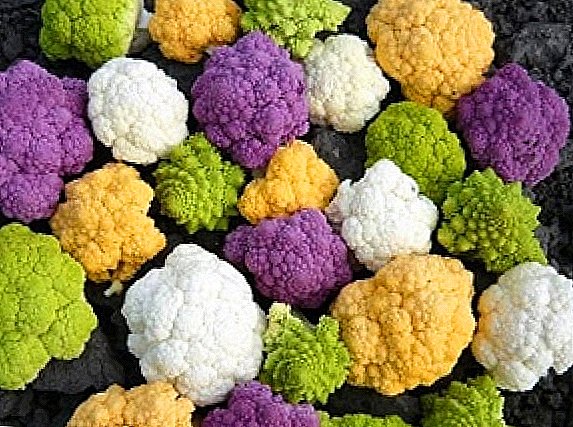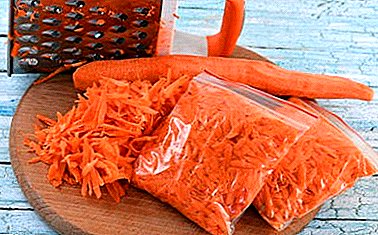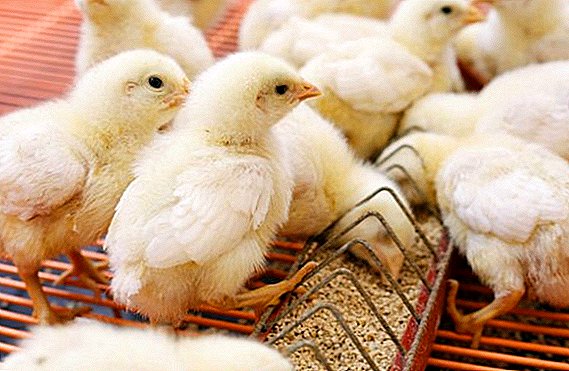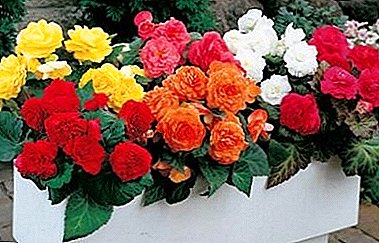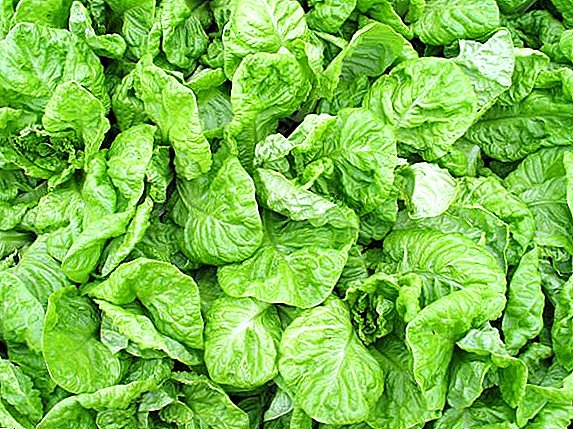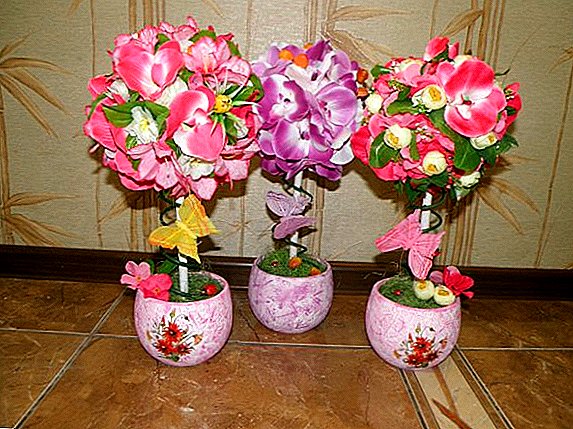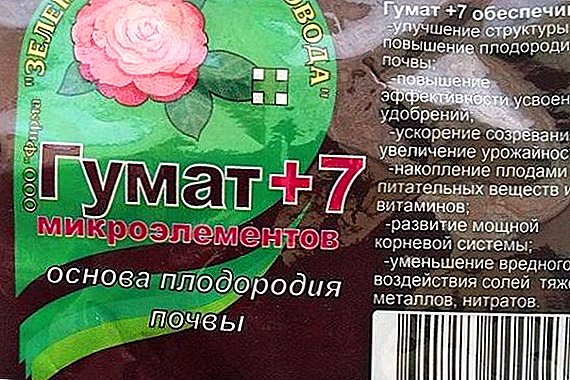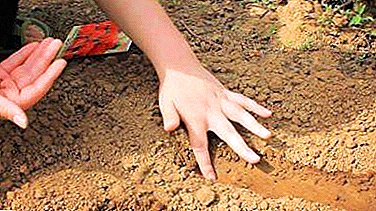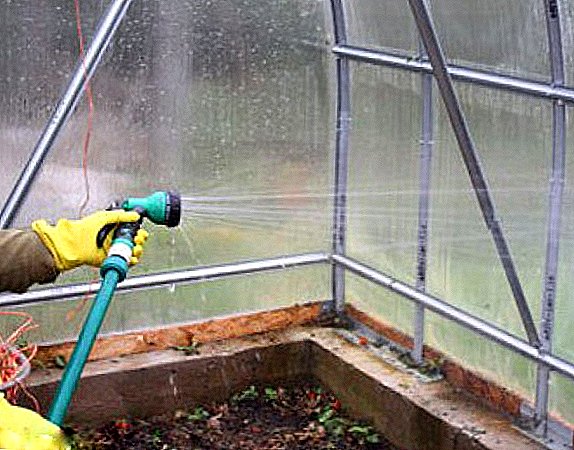 The greenhouse creates favorable conditions for the growth of not only healthy crops, but also various weeds and parasites. Therefore, before the start of the season, it is necessary to prepare and conduct its processing. How, when and how to process greenhouses and the soil in them - we will speak in an article today.
The greenhouse creates favorable conditions for the growth of not only healthy crops, but also various weeds and parasites. Therefore, before the start of the season, it is necessary to prepare and conduct its processing. How, when and how to process greenhouses and the soil in them - we will speak in an article today.
What is the treatment?
The first reason for the spring processing of greenhouses - this is preparation for the new season: destruction of seeds and roots of weeds, disposal of parasite larvae, cleaning of fungi and mold.
If you have just decided to acquire a polycarbonate greenhouse, it will be useful for you to study all the design features of these greenhouses; find out what kind of foundation is suitable for this greenhouse, how to choose polycarbonate for your greenhouse, and also how to make a polycarbonate greenhouse with your own hands.
The second reason - this is putting things in order. After winter, you may need to fix the frame, glue the sheets of coating.
 In addition, the treatment will provide a suitable balance of minerals in the soil, protect plants from possible diseases.
In addition, the treatment will provide a suitable balance of minerals in the soil, protect plants from possible diseases.
Optimum terms of processing of the greenhouse
Preparations for the next season should begin before the snow melts. At this time, snow is deposited to produce thawed snow and the structure is frozen in order to eliminate the ice and eliminate the overwintering insect larvae.
The next stages will begin in February - March, about a month before the planned start of planting. At this time, the main treatment is carried out - cleaning, disinfection, soil preparation.
Read more about how to treat the premises and the soil of the greenhouse after winter from pests and diseases.
Processing steps
Now let's talk directly about the processing steps themselves, step by step.
Cleaning of premises from facilities
The first thing to start with is cleaning all the equipment of the greenhouse. We carry everything inside - racks, supports, trellis, buckets, garden tools, etc.
All that is taken out, carefully inspect and verify.  Wooden elements are checked for the presence of rot and infections. If any is found, the damaged part must be replaced. After that, all the wooden parts are treated with quicklime.
Wooden elements are checked for the presence of rot and infections. If any is found, the damaged part must be replaced. After that, all the wooden parts are treated with quicklime.
Metal products are inspected in order to search for rust. All places affected by corrosion are treated with a rust converter or folk remedies (potatoes or vinegar with lemon juice). After cleaning everything is thoroughly primed and painted.
Did you know? The first greenhouses began to appear in ancient Rome, and the first greenhouse of modern construction appeared in the XIII century in Germany.
Now, when nothing interferes, we inspect the bearing supports and treat the rusty places with a rust converter.
Inspect and polycarbonate sheets for damage and lack of tightness of the joints. Found problems are eliminated with glue and sealant. If necessary, replace the sheets entirely.  Check and installed heating system or stove. We inspect the stove and check the chimney, correct and patch it, if necessary. Heating pipes are cleaned and re-painted with aluminum-based paint with the addition of drying oil.
Check and installed heating system or stove. We inspect the stove and check the chimney, correct and patch it, if necessary. Heating pipes are cleaned and re-painted with aluminum-based paint with the addition of drying oil.
Important! Do not use oil paints for heating pipes - they impair heat transfer.
Cleaning of the vegetable remains and garbage
While the paint is drying and the room is airing, we will deal with the collection and disposal of garbage.
We collect and throw away everything - disposable devices for tying (pegs, twine), plant remains, weeds, everything that has gone bad, rotted and is not suitable for further use.  Foliage, plant stems, roots and other organic waste can be used for the manufacture of compost and further feeding of the beds.
Foliage, plant stems, roots and other organic waste can be used for the manufacture of compost and further feeding of the beds.
Familiarize yourself with the features of compost preparation in garbage bags and do it yourself, and also read how to build a compost pit.
Other debris (branches, twine, rotten wood) should be burned in any way you like (oven for waste, fire). This will not only eliminate debris, but also provide a source of ash for further incorporation into the soil.
Greenhouse washing
Now you need to wash the greenhouse.
To do this, use only clean water and only as a last resort - a soap solution (with an alkali content not exceeding 3%).
First, apply the soap solution on the metal elements of the greenhouse. Then wipe them off with a damp, soft sponge or cloth. If diseases or pests were observed last season, a remedy can be added to the solution.  Polycarbonate washes outside and inside. The rules are the same - it is advisable to rinse everything with clean water, and only where there is contamination to treat it with soapy water.
Polycarbonate washes outside and inside. The rules are the same - it is advisable to rinse everything with clean water, and only where there is contamination to treat it with soapy water.
Important! Make sure that the soap does not fall into the soil.
Outside allowed watering plates from a hose, inside it is better to do with a rag or sponge.
Disinfection Design
After washing, you can treat Bordeaux liquid of low concentration (3-5%). This will protect against most evils - rust, blight, rot, scab.
Can be processed not by chemistry, but by organic means. For example, decoction of pine needles. To obtain it you need half a bucket of conifer needles to fill with water and leave to infuse.  To speed up the process, you can put a bucket with needles on the fire for 20 minutes. Then the infusion is sprayed on the details of the structures.
To speed up the process, you can put a bucket with needles on the fire for 20 minutes. Then the infusion is sprayed on the details of the structures.
Pine needles can be replaced with nettles. The recipe remains the same.
If the situation with the infection catastrophic and ordinary Bordeaux liquid does not help, it is necessary to apply sulfur fumigation.
You can use the usual cuttings sulfur, but it is better to use sulfur checkers (for example, "FAS").
Video: fumigating a greenhouse with sulfur checker
Before using the checkers, the greenhouse is carefully and hermetically sealed, and all the gaps are caulked. Checkers set on a non-combustible base in the middle of the greenhouse, set fire to the wick and quickly leave the room.
At 10 cu. m greenhouses need two checkers.
You can open it for airing in two days. Airing lasts about a week. At this time, it is dangerous to enter the greenhouse due to sulfur vapors.
Fumigation should not be carried out if the metal parts of the structure are damaged by rust. Sulfurous anhydride (a product of burning sulfur) destroys the metal. Therefore, fumigation is considered an extreme measure, and they rarely need to be used.
Important! All fumigation works should be carried out in protective clothing using personal protective equipment (glasses, gloves, gas mask or respirator).
Tillage
Although general disinfection and allows you to immediately treat the soil, but it is not always worth it to limit. The soil should also be disinfected.
Apply the following methods of soil treatment:
- biological - the most acceptable and safe, but extremely costly. In this case, the upper 8-10 cm of soil is removed from the entire greenhouse. The collected soil is either sprinkled on open beds, or mixed with manure and compost, and after a few years is used again in the greenhouse. A new fertile layer of earth is often poured into the greenhouse, often with siderats. This method is used by large farms;

The best siderats for the soil are lupine, oilseed radish, oats, rye and phacelia.
- temperature method - processing by low and high temperatures. In winter, the soil in the greenhouse is not covered with snow, but, on the contrary, is left to freeze. In the spring, the soil is watered with boiling water and covered with polyethylene (or other moisture-impermeable material) for steaming. So you can kill about 70-80% of all pests;
- chemical - treatment with various reagents. Such a drug is chosen individually, depending on the likely harmful factors;
- wet processing - it is carried out by strong chemicals (bleach, formalin, carbation). In the spring to carry out such work is not worth it because of the aggressiveness of chemicals, it is best done in the fall, after cleaning.
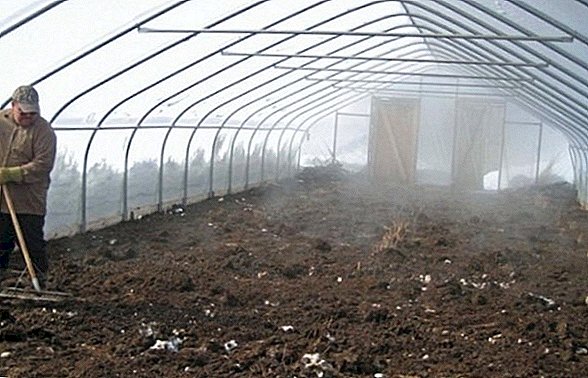 Soil treatment bleach
Soil treatment bleach
What if perennials grow in the greenhouse?
These tips are suitable for greenhouses that can be completely cleared of plants in the fall or spring. But there are also perennial plantings grown in protected ground. In this case, the processing still needs to be done.
Did you know? The largest greenhouse in the world is in the UK. These are two dome-shaped rooms in which more than a thousand plant species from all over the world grow (coffee, olives, palm trees, bamboo, etc.).
Processing time
It is necessary to process a greenhouse with perennial plants only in the beginning of spring - at the end of the rest period of the plants. In any case, carry out all operations after all the fruiting shoots have been removed.
Fundamental rules
The treatment will consist of garbage collection, cleaning and disinfection of inventory and soil. But this should be done carefully, using funds only from a specific disease or pest.
Video: sanitizing greenhouses in spring
Feedback from network users

Spring is a hot season for gardeners. This is especially true of greenhouses: it will be necessary to work here diligently and more than in an ordinary garden. Properly executed processing will protect your plants from diseases and pests, create all the necessary conditions for obtaining a bountiful and healthy crop.



 Soil treatment bleach
Soil treatment bleach